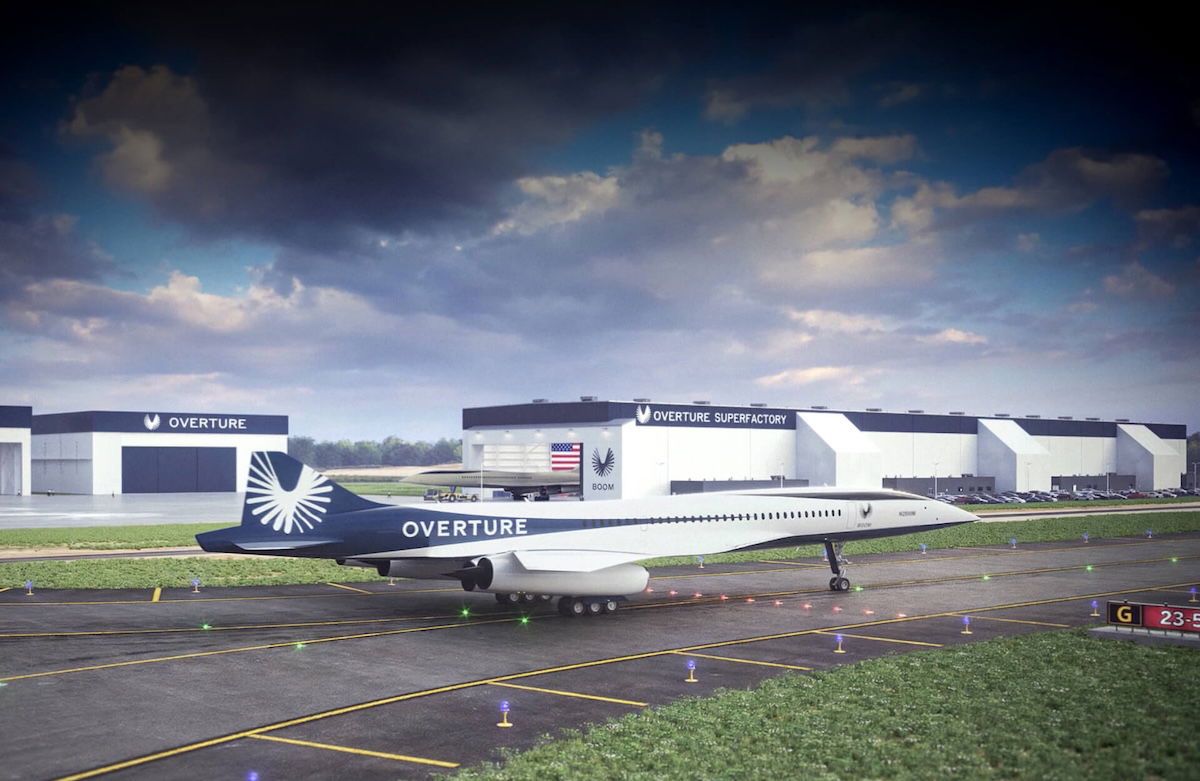Is supersonic commercial aviation one step closer to becoming a reality in the United States? Well, at least one major barrier standing in the way of it is being lifted…
United States paving way for supersonic commercial flight
On Friday, June 6, 2025, President Trump signed an executive order, instructing the Federal Aviation Administration (FAA) to end its ban on supersonic flight over United States land. Under current regulations, only military aircraft are allowed to exceed the sound barrier over land, and even then, there are restrictions on where it can be done.
Current regulations have been in place since 1973. The reasons for these restrictions are that sonic booms can be loud, and even capable of causing damage on the ground. So on the surface, seeing the reversal of a policy that has been around for over 50 years is pretty significant.
Here’s how the executive order describes the reason for the rule change:
“The United States stands at the threshold of a bold new chapter in aerospace innovation. For more than 50 years, outdated and overly restrictive regulations have grounded the promise of supersonic flight over land, stifling American ingenuity, weakening our global competitiveness, and ceding leadership to foreign adversaries. Advances in aerospace engineering, materials science, and noise reduction now make supersonic flight not just possible, but safe, sustainable, and commercially viable. This order begins a historic national effort to reestablish the United States as the undisputed leader in high-speed aviation. By updating obsolete standards and embracing the technologies of today and tomorrow, we will empower our engineers, entrepreneurs, and visionaries to deliver the next generation of air travel, which will be faster, quieter, safer, and more efficient than ever before.”
Trump’s executive order follows a bill pushed by Republican members of Congress in May 2025, which would’ve repealed the supersonic flight ban, as long as an audible sonic boom doesn’t reach the ground. That bill was justified based on the fact that the United States needs to compete with China, where Comac is developing the supersonic C949.
Will we see supersonic commercial aviation, though?
In theory, I think it’s logical enough to lift the ban on supersonic flying over land, given how technology has improved. Assuming reasonable regulations stay in place and there’s no audible sonic boom on the ground, that seems sensible to me.
Here in the United States, we’re seeing aeronautics company Boom work on bringing back supersonic passenger air travel. The company’s main product is the Boom Overture, which is essentially intended to be the modern day Concorde.
It goes without saying that the company faces an uphill battle, as developing a completely new type of aircraft as an independent manufacturer is no small feat. Repealing the ban on supersonic travel over land is of course hugely positive for Boom, and is something the company needed to even have the slightest chance of success.
That being said, I’m still skeptical of the overall viability of this concept, on a variety of fronts. While the company clearly has a lot of smart people working there, the aircraft manufacturing business isn’t exactly an easy one.
First there’s the economics. Will the company be able to raise the many billions of dollars required to design this aircraft from scratch? Will Boom be able to price the plane attractively enough so that it makes sense for airlines? Will the operating costs make the plane commercially viable, and will the Boom Overture live up to the specs that have been promised (which have already been reduced significantly)?
Then there’s the actual logistical challenges of building an aircraft. How will Boom design an engine for this aircraft? How long will it take for this concept to be certified? The company has already achieved supersonic flight with a demonstrator aircraft, but obviously that’s not the same as building a jet big enough to accommodate dozens of passengers.
With supersonic travel being allowed over land, it also raises the question of whether there would be merit to coast-to-coast supersonic flights, or if the math just doesn’t add up there.
Fundamentally, the biggest issue with supersonic travel is that these planes would be in all-business class layouts. Airlines have a strong incentive not to pick up these kinds of planes, since they’d be cannibalizing their own premium demand on mainline jets. Like, we’re seeing airlines introduce bigger and bigger premium cabins, and adding all-business class jets to the mix won’t help with the economics of those planes.

Bottom line
The United States is ending its ban on supersonic commercial flight over land. This rule has been in place since 1973, so it’s a major development, and reflects that it’s now possible to operate supersonic flights without an audible sonic boom reaching the ground.
This is obviously great news for Boom, which is designing the Overture supersonic jet. I’m not sure it does much to alter the economics or appeal of the jet, but it at least keeps the concept in play, and makes it a littel more realistic.
What do you make of the US ending the ban on supersonic flights over land?







